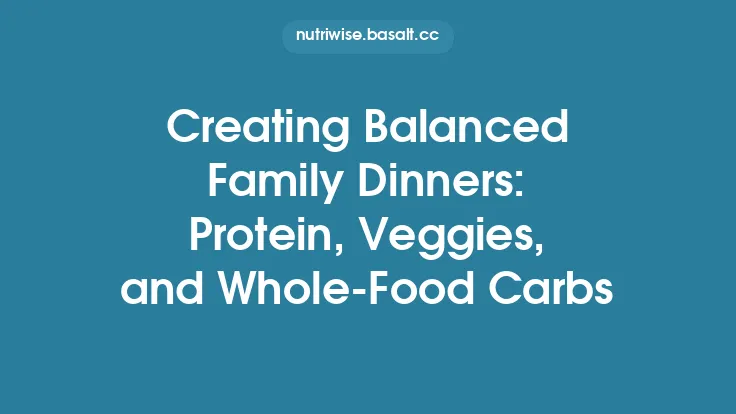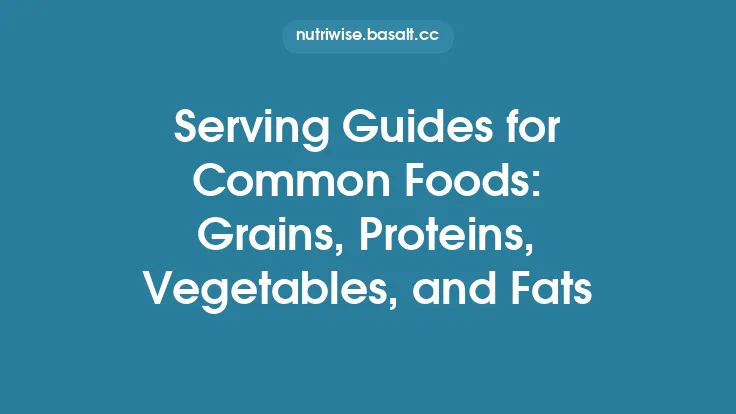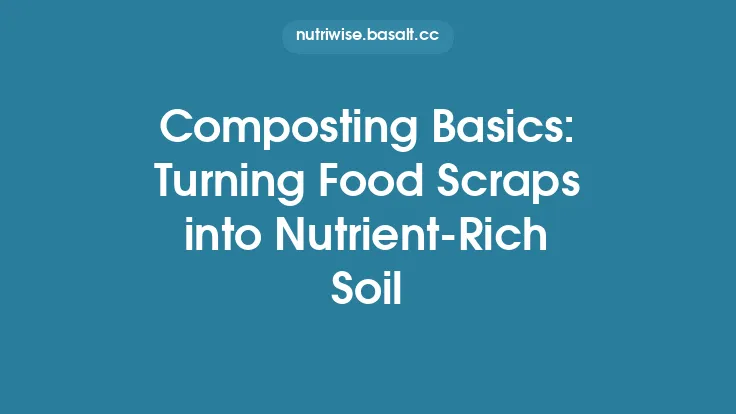In many kitchens, the bits and pieces that end up in the trash—vegetable peels, herb stems, bones, and even coffee grounds—are treasure troves of flavor, nutrition, and utility. By learning how to transform these scraps into homemade stocks, sauces, and other culinary foundations, you not only divert waste from landfills but also create cost‑effective, nutrient‑dense ingredients that elevate everyday meals. This guide walks you through the science, techniques, and practical considerations for turning what would be discarded into pantry staples that last for months.
Understanding the Chemistry of Flavor Extraction
When plant or animal tissues break down in water, heat, or oil, a cascade of chemical reactions releases soluble compounds:
- Amino acids and nucleotides (from bones, meat trimmings, and mushroom stems) contribute umami depth.
- Polysaccharides such as pectin and cellulose (found in carrot tops, onion skins, and celery leaves) thicken liquids as they gelatinize.
- Essential oils and phenolics (from herb stems, garlic skins, and citrus peels) provide aromatic notes and antioxidant properties.
Recognizing which compounds are present in a given scrap helps you pair ingredients for balanced flavor profiles and decide on the appropriate cooking medium (water, oil, or fat).
Building a Versatile Base Stock
1. Selecting Scraps
| Category | Ideal Scraps | Flavor Contribution |
|---|---|---|
| Vegetable | Onion ends, carrot tops, celery leaves, mushroom stems, leeks, fennel fronds | Sweet, earthy, aromatic |
| Herb | Parsley stems, cilantro stems, thyme sprigs, rosemary tips | Fresh, bright, resinous |
| Animal | Beef or chicken bones, fish heads, pork neck bones, turkey carcasses | Rich, gelatinous, savory |
| Miscellaneous | Tomato cores, pepper seeds, seaweed (kombu), dried mushrooms | Umami, tangy, briny |
Avoid overly bitter or acrid scraps such as burnt ends, wilted greens, or overly ripe fruit skins, as they can dominate the final flavor.
2. Preparing the Ingredients
- Rinse briefly to remove surface dirt; a gentle spray is sufficient to avoid leaching water‑soluble nutrients.
- Trim any excessively tough or fibrous portions that may release unwanted tannins (e.g., thick kale stems).
- Roast bones or robust vegetables (carrots, onions) at 200 °C (400 °F) for 30–45 minutes to develop Maillard‑derived depth. This step is optional but adds complexity to the stock.
3. Ratio and Volume
A reliable starting point is 1 kg of bones or vegetable scraps to 2–3 L of water. For a purely vegetable stock, use 1 cup of mixed scraps per 2 cups of water. Adjust based on desired concentration; a “double‑strength” stock can be reduced later.
4. Cooking Method
| Method | Temperature | Time | Notes |
|---|---|---|---|
| Cold‑start simmer | Bring water and scraps to a gentle boil, then reduce to a low simmer (≈85 °C/185 °F) | 1–4 h (bones) / 30–60 min (vegetables) | Prevents cloudiness; skimming is easier. |
| Pressure cooking | High pressure (≈15 psi) | 30–45 min (bones) / 15 min (vegetables) | Extracts collagen quickly; yields gelatin‑rich stock. |
| Slow‑cooker | Low (≈90 °C/195 °F) | 6–10 h (bones) / 4–6 h (vegetables) | Hands‑off; monitor for excessive reduction. |
Skim foam and fat that rise to the surface during the first 30 minutes; this removes impurities and results in a clearer stock.
5. Straining and Storing
- Fine mesh or cheesecloth removes particulate matter.
- Cool rapidly (ice‑water bath) to limit bacterial growth.
- Portion into airtight containers: 250 mL jars for quick use, or 1 L freezer bags for bulk.
- Label with date and type (e.g., “Chicken Stock – 2025‑10‑14”).
A well‑made stock can be refrigerated for up to 5 days or frozen for 6 months without loss of flavor.
Crafting Sauces Directly from Scraps
1. Pan‑Based Deglazing
After sautéing aromatics or searing proteins, the browned bits (fond) left in the pan are a concentrated source of flavor. Deglaze with a splash of wine, cider, or a splash of the prepared stock to dissolve the fond, then reduce to intensify.
2. Emulsified Sauces
- Herb‑infused oil: Gently heat olive oil with herb stems (e.g., rosemary, thyme) for 5 minutes, strain, and whisk into a vinaigrette.
- Nut‑based sauces: Blend toasted vegetable peels (e.g., carrot tops) with soaked nuts, a touch of stock, and lemon juice for a creamy, dairy‑free sauce.
3. Thickening with Scraps
- Pectin‑rich peels (apple, citrus) can be simmered into a syrup, then reduced to a glaze.
- Gelatin from bones: Use the gelatinous layer that forms on cooled stock as a natural thickener for gravies and aspics.
4. Fermented Condiments
Collect vegetable trimmings (cabbage cores, carrot ends) and submerge them in a brine (2 % salt by weight). Over 1–2 weeks, lactic‑acid fermentation yields a tangy, probiotic‑rich relish that can be blended into sauces or used as a topping.
Extending the Life of Scraps Through Preservation
1. Freezing for Future Stocks
- Bag and portion: Place raw scraps in zip‑lock bags, squeeze out air, and freeze flat. When ready, transfer directly to a pot—no thawing needed.
- Blanching: For delicate herbs (parsley, cilantro), blanch briefly (30 seconds), shock in ice water, dry, and freeze. This preserves color and flavor for later stock or pesto.
2. Drying and Powdering
- Dehydrate vegetable peels (e.g., onion skins, carrot tops) at 55 °C (130 °F) until brittle. Grind into a fine powder and store in a dark jar. Use sparingly to boost flavor in soups, sauces, or rubs.
3. Pickling
Acidic pickling (vinegar, salt, sugar) stabilizes scraps like cucumber ends, radish tops, or pepper seeds. Pickled scraps can be blended into sauces for a bright, tangy note and also add a probiotic benefit.
Nutritional and Environmental Impact
- Nutrient retention: Stocks made from bones release calcium, magnesium, and collagen; vegetable scraps contribute vitamins (A, C, K) and antioxidants that survive gentle simmering.
- Carbon footprint reduction: Diverting 1 kg of food waste from landfill can prevent the release of up to 1.5 kg of CO₂ equivalents, according to life‑cycle analyses.
- Cost savings: A typical household can save $30–$50 per month by replacing store‑bought broth and sauces with homemade versions derived from scraps.
Troubleshooting Common Issues
| Symptom | Likely Cause | Remedy |
|---|---|---|
| Cloudy stock | High heat causing protein coagulation; insufficient skimming. | Start with cold water, maintain a gentle simmer, skim regularly. |
| Bitter aftertaste | Inclusion of overly bitter scraps (e.g., kale stems, burnt pieces). | Remove bitter components; balance with a splash of acid (lemon juice) or a pinch of sugar. |
| Thin consistency | Insufficient gelatin (bones) or pectin (peels). | Add a small amount of gelatin sheets or pomegranate peel powder; extend simmer time. |
| Off‑flavor after freezing | Oxidation of fats in bone stock. | Cool stock rapidly, remove surface fat before freezing, or use vacuum‑sealed bags. |
| Excessive saltiness | Over‑salting during reduction. | Dilute with water or unsalted stock; add a splash of acid to balance. |
Scaling Up for Larger Operations
For community kitchens or small food‑service establishments, the principles remain the same but require systematic collection and inventory:
- Standardize scrap bins by type (vegetable, herb, animal) to streamline sorting.
- Log weight of incoming scraps daily; this data informs batch size and ensures consistent flavor.
- Implement a rotation schedule for frozen scrap bags to avoid waste from forgotten stock.
- Invest in a commercial‑grade stockpot or pressure cooker with a capacity of 30–50 L to handle larger volumes efficiently.
Final Thoughts
Transforming food scraps into homemade stocks, sauces, and related preparations is a powerful, evergreen strategy for reducing waste while enriching your culinary repertoire. By mastering the chemistry of flavor extraction, employing reliable techniques for preparation and preservation, and understanding the broader environmental and nutritional benefits, you can turn the “leftovers” of your kitchen into the foundation of countless delicious dishes. Embrace the mindset that every peel, stem, and bone holds potential—and let that potential simmer, reduce, and rise into the next meal.





